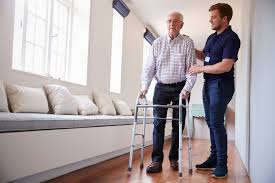Topic Overview
Nursing historians face the challenge of determining whether care provided to the sick or injured in antiquity was nursing care.[3] In the fifth century BC, for example, the Hippocratic Collection in places describes skilled care and observation of patients by male "attendants," who may have been early nurses.[4] Around 600 BC in India, it is recorded in Sushruta Samhita, Book 3, Chapter V about the role of the nurse as "the different parts or members of the body as mentioned before including the skin, cannot be correctly described by one who is not well versed in anatomy. Hence, any one desirous of acquiring a thorough knowledge of anatomy should prepare a dead body and carefully, observe, by dissecting it, and examine its different parts."

Before the foundation of modern nursing, members of religious orders such as nuns and monks often provided nursing-like care.[5] Examples exist in Christian,[6] Islamic[7] and Buddhist[8] traditions amongst others. Phoebe, mentioned in Romans 16 has been described in many sources as "the first visiting nurse".[9][10] These traditions were influential in the development of the ethos of modern nursing. The religious roots of modern nursing remain in evidence today in many countries. One example in the United Kingdom is the use of the historical title "sister" to refer to a senior nurse in the past.[11]
During the Reformation of the 16th century, Protestant reformers shut down the monasteries and convents, allowing a few hundred municipal hospices to remain in operation in northern Europe. Those nuns who had been serving as nurses were given pensions or told to get married and stay home.[12] Nursing care went to the inexperienced as traditional caretakers, rooted in the Roman Catholic Church, were removed from their positions. The nursing profession suffered a major setback for approximately 200 years.[13]
Traditional
Nursing historians face the challenge of determining whether care provided to the sick or injured in antiquity was nursing care.[3] In the fifth century BC, for example, the Hippocratic Collection in places describes skilled care and observation of patients by male "attendants," who may have been early nurses.[4] Around 600 BC in India, it is recorded in Sushruta Samhita, Book 3, Chapter V about the role of the nurse as "the different parts or members of the body as mentioned before including the skin, cannot be correctly described by one who is not well versed in anatomy. Hence, any one desirous of acquiring a thorough knowledge of anatomy should prepare a dead body and carefully, observe, by dissecting it, and examine its different parts."

Before the foundation of modern nursing, members of religious orders such as nuns and monks often provided nursing-like care.[5] Examples exist in Christian,[6] Islamic[7] and Buddhist[8] traditions amongst others. Phoebe, mentioned in Romans 16 has been described in many sources as "the first visiting nurse".[9][10] These traditions were influential in the development of the ethos of modern nursing. The religious roots of modern nursing remain in evidence today in many countries. One example in the United Kingdom is the use of the historical title "sister" to refer to a senior nurse in the past.[11]
During the Reformation of the 16th century, Protestant reformers shut down the monasteries and convents, allowing a few hundred municipal hospices to remain in operation in northern Europe. Those nuns who had been serving as nurses were given pensions or told to get married and stay home.[12] Nursing care went to the inexperienced as traditional caretakers, rooted in the Roman Catholic Church, were removed from their positions. The nursing profession suffered a major setback for approximately 200 years.[13]
Traditional
Nursing historians face the challenge of determining whether care provided to the sick or injured in antiquity was nursing care.[3] In the fifth century BC, for example, the Hippocratic Collection in places describes skilled care and observation of patients by male "attendants," who may have been early nurses.[4] Around 600 BC in India, it is recorded in Sushruta Samhita, Book 3, Chapter V about the role of the nurse as "the different parts or members of the body as mentioned before including the skin, cannot be correctly described by one who is not well versed in anatomy. Hence, any one desirous of acquiring a thorough knowledge of anatomy should prepare a dead body and carefully, observe, by dissecting it, and examine its different parts."

Before the foundation of modern nursing, members of religious orders such as nuns and monks often provided nursing-like care.[5] Examples exist in Christian,[6] Islamic[7] and Buddhist[8] traditions amongst others. Phoebe, mentioned in Romans 16 has been described in many sources as "the first visiting nurse".[9][10] These traditions were influential in the development of the ethos of modern nursing. The religious roots of modern nursing remain in evidence today in many countries. One example in the United Kingdom is the use of the historical title "sister" to refer to a senior nurse in the past.[11]
During the Reformation of the 16th century, Protestant reformers shut down the monasteries and convents, allowing a few hundred municipal hospices to remain in operation in northern Europe. Those nuns who had been serving as nurses were given pensions or told to get married and stay home.[12] Nursing care went to the inexperienced as traditional caretakers, rooted in the Roman Catholic Church, were removed from their positions. The nursing profession suffered a major setback for approximately 200 years.[13]
test
